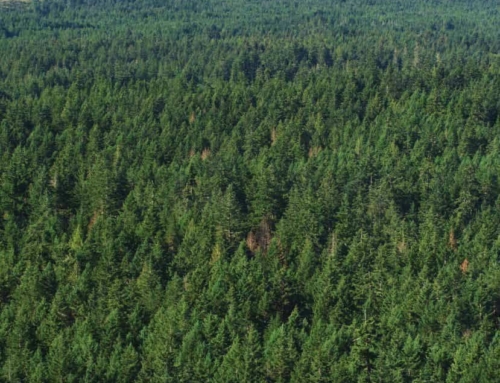Log Exports: The Story Behind the Story
By David Elstone, RPF, TLA Executive Director
Truck LoggerBC, Spring 2017
By David Elstone, RPF, TLA Executive Director
Truck LoggerBC, Spring 2017
It’s election time! And as if on cue, that old populist punching bag issue, BC’s log exports, has been pulled out to rally the masses. They’re painting the picture that our forests are being drained for simple profit, powered by the old saying “an exported log is an exported job.” It is easy to pull on heart strings when a loaded logging truck full passes through a town with no sawmill supposedly giving no benefit to the community.
So then why am I celebrating that in 2016 log exports as a percentage of the total coastal harvest was 35 per cent? My reasons are simple.
Exporting logs sustains local jobs, keeping workers employed in the woods and in BC sawmills and pulp mills. This is contrary to common belief. However, when you look at the facts, it’s clear it’s the truth.
If we were not exporting those logs (6.3 million cubic metres in 2016), those trees would not have been harvested. They would have been left standing and the loggers and truckers who delivered them would be out of work.
What gets overlooked by the anti-log export faction, is the economic reality that BC coastal sawmills, pulp mills and value-add producers need log exports to ensure they get the type of logs their mills need to operate. These manufacturing facilities need a specific type of log or species of timber to operate. Log exports allows us to harvest the entire timber profile. So if log exports were curtailed, the full harvest would be affected not just the 35 per cent that’s exported. With no log exports, there would be far, far greater unemployment in our rural communities.
So how do we explain all the mill closures we have seen in the province over the last 30 years? Again, much of the anti-log export rhetoric leaves out the full story. No BC sawmill has ever been closed because of a shortage of logs due to log exports. We need to look at the size of the working forest.
The BC allowable annual cut (AAC) for coastal Crown land has fallen from a high of 24.5 million cubic metres in 1985 to 16.5 million cubic metres today, a reduction of 8.0 million cubic metres or 33 percent. This is primarily as a result of increased environmental protection that reduced the size of the coastal working forest. Given the log capacity of the current mills operating on the coast, 8 million cubic metres equates to 16 sawmills closed as a result of environmental protection of coastal forests. Simply put, it is wrong to say that mills have closed as a result of log exports. These sawmills and pulpmills have closed, in part, as a result of significant AAC reductions caused by environmental pressure.
Is there anybody investing in new mills if we have the logs? Indeed there is a brand-new sawmill currently being built in Surrey that will purchase some of these logs to support its operation. However, log exports occur because what we harvest is surplus to domestic demand.
To dig deeper into the question of investment, let’s look to the US Pacific Northwest. There privately owned timberlands are the main source of harvesting in the region and log exports have been a principal product for decades. And yet, new sawmills are being built there today and many, if not most, have seen major upgrades. Despite this investment, sawmill employment has dropped in the Pacific Northwest. Investment drove consolidation in sawmills which resulted in the construction of larger, more cost-effective mills which employed less people than the older, inefficient smaller mills. Something to think about.
While BC’s log export policies have been around for over 100 years, markets have changed dramatically. In 2005, log exports to the US were very strong. Today, the US demand has shrunk dramatically and is now fourth on the list of export destinations. As with so much of our BC forest products, China has become the top market for BC log exports. Again, contrary to common belief, very little returns to North America in finished product. If it weren’t for China, there would be significant unemployment in our forest industry across BC.
If the next government in BC wants to create more jobs in the forest industry, they should focus on policy that allows for the harvest of the four million cubic metres of allowable cut that goes unharvested every year. In doing so, they would create upwards of 8,000 jobs across the province. After all, there are two jobs in the forest supply chain (i.e., logging) for every direct manufacturing job.
We celebrate that 35 per cent of the coastal harvest was exported because we wouldn’t likely be here if it wasn’t. Perhaps environmentalists would be happy if that percentage was zero, but I am guessing loggers, mill workers and the rural communities where these people live and work would beg to differ.







Get Social